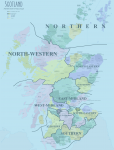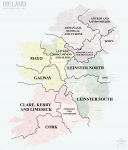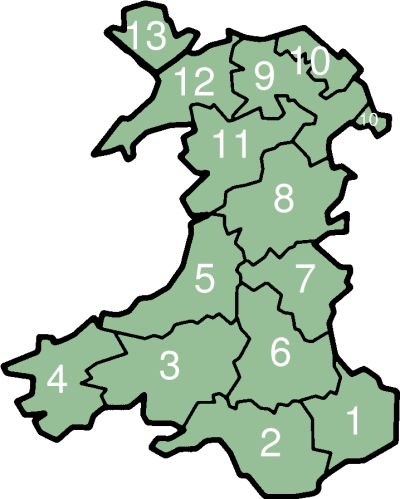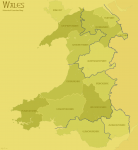The Maple Leaf Forever
The
Dominion of Canada is the oldest, largest, and most populous of the British Dominions. As part of my sketches for the formation of the Imperial Federation I have Canada as the laggard, since at the turn of the 20th century it is governed by Sir Wilfrid Laurier, the first of many PMs who sought to distance Canada from her Imperial entanglements. He was only partly successful and IOTL his efforts would ultimately result in his defeat when he pursued trade reciprocity with the United States (how's
that for timely?). ITTL, I imagine the 1904 or 1908 elections would result in the election of the Conservatives, led by Sir Robert Borden, who argue in support of the Imperial Federation as Laurier attempts to avoid committing too strongly either way, thus alienating both sides of the debate. The 1901 census reported a population of
5,371,315 for the Dominion of Canada, a larger population than that of Scotland or Ireland. Worth noting in regards to the "civilized peoples" doctrine of representation,
34,481 of these are listed as "Half-Breeds" (Metis) and
93,460 as Indians - which is to say, Aboriginals. (In French they are called
sauvages). Interestingly, though the Empire has hundreds of millions of
actual Indians, those peoples are not listed in the Census. The only peoples not of European or North American origin to be listed are "Chinese and Japanese" (a surprisingly low
22,050) and "Negroes" (
17,437). Chinese-Canadians were granted the franchise in 1898; and only "status Indians" were denied the right to vote; that is, they were denied the franchise on the basis of their nationality, not (technically) their race. Therefore the proportion of the population to be denied the franchise on account of being "insufficiently uncivilized" is probably less than 100,000 - or about 2% of the total population. The Canadian delegation, in the face of feints from the South African delegation eager to reduce Canadian representation within the Imperial Parliament in retaliation for their own self-imposed marginalization, will claim their disenfranchised population to be "negligible", and so the decision will be made to represent Canada within the Parliament as though its entire population were eligible to vote. (A large chunk of these Indians would be Inuit - IOTL these are today legally distinct from the other "First Nations" Aboriginals - who wouldn't be able to vote
anyway as the Territories are not represented within the Imperial Parliament, their meagre population (about 46,000 per the 1901 census) divided
pro rata amongst the remaining provinces for the purposes of representation.
Taking all this into consideration, the Dominion of Canada, whose top-level divisions are the nine provinces, sends the following delegation of
72 MIPs (a larger delegation than any other realm save for England, with or without Wales) to the Imperial Parliament:
Ontario - population 2,182,947 -
30 MIPs. These thirty MIPs will be divided amongst the combined building blocks formed by the
85 federal electoral districts in use at the time.
Quebec - population 1,648,898 -
22 MIPs. These twenty-two MIPs will be divided amongst the combined building blocks formed by the
65 federal electoral districts in use at the time.
Nova Scotia - population 459,574 -
6 MIPs. Theoretically I
could divide the six MIPs amongst
two three-member constituencies, which I will investigate upon a more detailed review,
but I like the idea of Nova Scotia going with the six-member constituency, not least because I want to potentially
return a Gaelic/Celtic Nationalist MP for Nova Scotia (who might seek to ally with his brethren in the British Isles) and the population is still
just large enough (with a 1/7 + 1 threshold) for me to do so.
New Brunswick - population 331,120 -
5 MIPs. One of the better chances for a potential
Parti Nationaliste du Canada (or the
Parti Rouge or
les Patriotes, if you like) to return a member from outside of Quebec. Of those 331,120 people, just under 80,000 (about 24%) are listed as having "French" origin in the 1901 census. The electoral threshold is 1/6 + 1, or 16.67%. Game on.
Manitoba - population 255,211 -
4 MIPs. Among those four MIPs likely to be elected is the arch-imperialist
Arthur Meighen for the Conservatives/Unionists.
British Columbia - population 178,657 -
2 MIPs. Manitoba just made it over the edge to get to 4; BC fell
just short of 3, despite their relatively close populations. Of course, in time, BC will send a much larger delegation to the Imperial Parliament than Manitoba.
Prince Edward Island - population 103,259 -
1 MIP. This province will never send more than one MIP to the Imperial Parliament. In decades to come, this province will be one of the main arguments for shifting Canada's top-level division from provinces to super-provincial "regions" (i.e. the Maritimes). IOTL, in 2016, PEI's population had risen, in over a century, to... 142,907. An increase of 38% in 115 years. In the same timespan, Ontario's population
sextupled (616%), Manitoba's population
quintupled (501%), and Alberta's population increased
fifty-six-fold (5,611%). I will say that, by the reckoning of the 1901 census at least, PEI
is duly entitled to its lone MIP.
Saskatchewan - population 93,064 -
1 MIP. Not a province in 1901, it was formed (alongside Alberta) in 1905. The population of the territorial districts that formed Saskatchewan are counted to arrive at this figure.
Alberta - population 72,491 -
1 MIP. See Saskatchewan.
The Territories have a population of 46,094. More than half of this remaining population lives in the newly-formed Yukon Territory, home of the famous Klondike Gold Rush of the late 1890s, where the North-West Mounted Police, or "Mounties", first captured the imagination of American prospectors. These people are not directly represented within the Imperial Parliament, though they are "counted" as part of Canada's overall delegation.
Coming up next, we'll take a look under the hood of Ontario, with a map of the 85 building blocks and how they might form the no more than ten (30 divided by 3 equals 10), and no fewer than five (30 divided by 7 equals 4 2/7, rounded up to 5), "Imperial ridings" we will need.
And that's my outline for Canada. This isn't set in stone; I'm still more than willing to make further tweaks as needed, as indeed some of you will notice I already have done.






